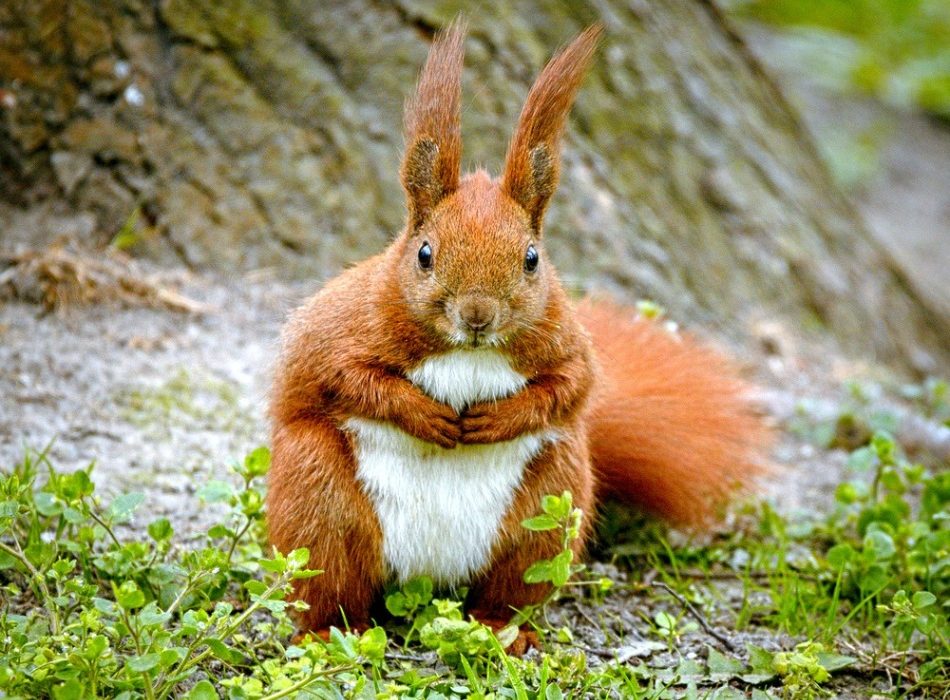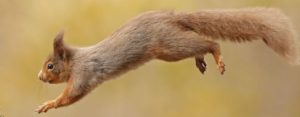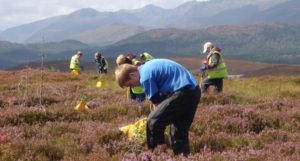Between 1903 and 1946 the Highland Squirrel Club reportedly killed no fewer than 103,000 red squirrels. The arboreal acrobat was treated as vermin, a threat to a fledgling forestry industry.
Such is the shift in societal attitudes since, that the very same “vermin” now adorns magazine covers, heads up advertising campaigns and has spawned endless conservation appeals. Modern Britain loves red squirrels.
The wild forest that once stretched across much of the Scottish Highlands, would have allowed a red squirrel to travel from Lockerbie to Lochinver without ever touching the ground.
Today, that forest covers just 2% of its former range. As red squirrels don’t willingly cross open country, Scotland’s fragmented wooded landscape effectively imprisons them on islands of trees surrounded by an ocean of inaccessible moorland.Trees for Life, the Scottish rewilding charity dedicated to the restoration of a wild forest, has embarked on a pioneering project to translocate red squirrels to the North West Highlands, where despite improving habitat, squirrels have been absent for decades. By taking a few squirrels from areas like the Moray coast where they’re plentiful, Trees for Life is committed to establishing eight new populations in and around Torridon and Ullapool.
About Trees for Life:
The core purpose and vision of Trees for Life is to restore the Caledonian Forest and all its constituent species of flora and fauna to the Scottish Highlands. By engaging volunteers to achieve this, we aim to provide a powerful and educational experience that will promote the work of restoration to wider audiences. Through providing a demonstration of the techniques of ecological restoration, we aim to inspire similar projects elsewhere in the UK and around the world.
The first part of our Action Plan is to facilitate the natural regeneration of native trees, by fencing deer out of areas on the periphery of existing remnants of forest. This allows seedlings to grow naturally to maturity again, without being over-grazed. This is the simplest and best method of regenerating the forest, as it involves the minimum of intervention and allows nature to do most of the work. However, this only works for locations where there is an existing seed source nearby, which is not the case in the treeless expanses which make up most of the Highlands today.
The second part of our Action Plan comes into effect in situations where natural regeneration cannot occur, and it involves planting native trees in barren areas where the forest has disappeared. To do this, we collect seed from the nearest surviving trees, to maintain the local genetic variation in the forest. The resulting seedlings are then planted in a random, non-linear pattern inside fenced exclosures, replicating the natural distribution of the trees. We are working with all of the native trees from the forest, and are paying particular attention to the pioneer species such as birch, rowan and aspen, as they have an important role to play in the succession of the forest as it gets re-established.
The third part of our Action Plan involves the removal of non-native trees, which in some areas have been planted as a commercial crop amongst the old trees of the Caledonian Forest remnants, preventing their regeneration. Trees that we remove include lodgepole pine, Sitka spruce, western hemlock and larch, either by cutting down or ring-barking, as appropriate. We also remove non-native Rhododendron ponticum, an extremely invasive shrub.
Combining these three strategies, our intention is to re-establish areas, or ‘islands’, of healthy young forest scattered throughout the barren, deforested glens. As these new trees reach seed-bearing age they will form the nuclei for expanded natural regeneration in the surrounding area. While the trees in these `islands’ are growing, it is important to reduce the numbers of deer, so that the forest restoration process can become self-sustaining, without the need for further fences.
Featured photo of red squirrel by Hedera Baltica via Wikipedia.



